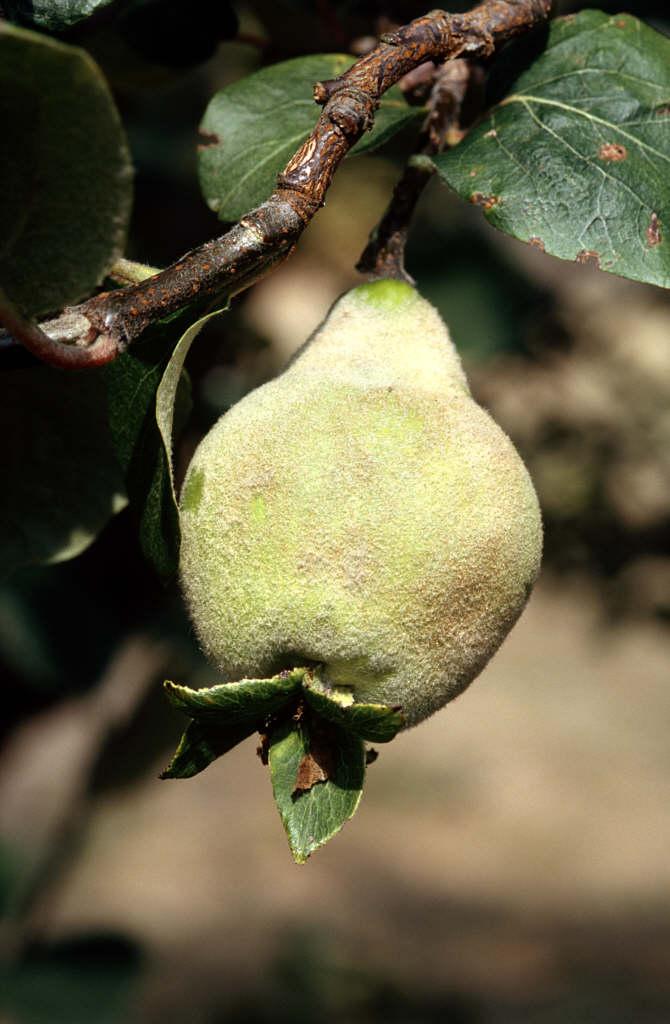Cydonia oblonga 'Vranja' Nenadovic (F)
quince 'Vranja'
A large, broad-crowned deciduous shrub, or small tree, with leaves grey-hairy beneath and pink-tinged flowers to 5cm wide. Large pear-shaped, green fragrant fruits become golden-yellow when ripe

Buy this plant
Size
Ultimate height
2.5–4 metresTime to ultimate height
10–20 yearsUltimate spread
2.5–4 metresGrowing conditions
Moisture
Moist but well–drainedpH
Acid, Alkaline, NeutralColour & scent
| Stem | Flower | Foliage | Fruit | |
| Spring | White Pink | Green | ||
|---|---|---|---|---|
| Summer | Green | |||
| Autumn | Green | |||
| Winter | Yellow |
Position
- Full sun
Aspect
South–facing or West–facing
Exposure
Sheltered Hardiness
H5Botanical details
- Family
- Rosaceae
- Native to GB / Ireland
- No
- Foliage
- Deciduous
- Habit
- Bushy
- Potentially harmful
- Seeds contain toxins so these should be removed if you are considering eating the fruit, usually grown as an ornamental shrub. Pets: Fruit are ornamental - not to be eaten - see the HTA guide to potentially harmful plants for further information and useful contact numbers
- Genus
Cydonia are large deciduous shrubs with simple, ovate leaves and 5-petalled, bowl-shaped pink or white flowers, followed by pear-like fruits, edible when ripe
- Name status
Accepted
- Horticultural Group
- This genus produces fruit, but not necessarily edible fruit
How to grow
Cultivation
Grow in a warm, sheltered spot as flowers are susceptible to frost and warm conditions are needed for the fruit to ripen well. Tolerant to a wide range of soil, but will do best where soil is deep and moisture retentive, so long as it is not prone to waterlogging. Further quince cultivation advice
Propagation
Propagate from semi-ripe cuttings in summer, but it is often propagated by grafting onto a clonal rootstock for fruit. The rootstock will determine the size of the plant
Suggested planting locations and garden types
- Cottage and informal garden
Pruning
Pests
Generally pest-free but may be susceptible to pests that can affect apples and pears such as caterpillars and aphids
Diseases
May be susceptible to quince leaf blight, brown rot, fireblight, powdery mildews and honey fungus
Get involved
The Royal Horticultural Society is the UK’s leading gardening charity. We aim to enrich everyone’s life through plants, and make the UK a greener and more beautiful place.